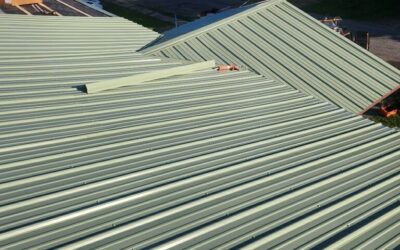Are Roof Leaks Easy to Fix? A Comprehensive Guide for Homeowners
A roof leak is one of those home issues that most people dread. It’s like the unwanted guest that arrives unannounced and brings along an array of potential problems, from structural damage to mold growth. When a roof starts leaking, your immediate thought might be, “How easy is this to fix?” In reality, roof leaks are not always easy to repair, but that doesn’t mean they’re impossible to handle.
Whether you’re a homeowner looking to do the repair yourself or you plan to hire a professional, understanding the causes of roof leaks, the types of leaks, and the steps involved in repairing them can help you decide the best course of action.
In this comprehensive blog, we’ll break down what you need to know about roof leaks, how to assess the severity of the problem, and whether fixing the leak is something you can handle on your own or whether you should call in the experts.
What Causes Roof Leaks?
Before diving into how to fix a roof leak, it’s important to understand why roof leaks happen in the first place. The causes can vary, but the most common ones include:
1. Age and Wear
Over time, roofing materials deteriorate due to exposure to the elements, particularly the sun, rain, snow, and wind. Asphalt shingles, which are one of the most common types of roofing material, typically last 15-30 years. After this time, they become more prone to cracking, curling, or loosening, which can lead to leaks.
2. Damaged or Missing Shingles
If a shingle is damaged, cracked, or completely missing, it can create a gap through which water can seep into your home. Strong winds, hailstorms, and fallen branches can all cause shingles to become dislodged or broken.
3. Improper Installation
Sometimes roof leaks occur due to improper installation of the roofing material, flashings, or other components. For instance, if the flashing around chimneys, skylights, or vents is not installed properly, water can infiltrate through those areas.
4. Clogged Gutters
When gutters and downspouts become clogged with leaves, twigs, or debris, water can’t flow properly off the roof. Instead, it can back up under the shingles, causing leaks, especially during heavy rainstorms.
5. Roof Valleys
Roof valleys, where two sloping sections of the roof meet, are critical points for water drainage. If the shingles in this area become damaged or if the flashing is improperly installed, it can result in leaks.
6. Ice Dams
In colder climates, ice dams can form along the roof’s eaves. This happens when melting snow refreezes and creates a dam of ice, preventing water from draining off the roof. As water backs up, it can leak into the attic or ceiling.
7. Flashing Failure
Flashing is the material used to seal joints and seams, such as those around chimneys, vents, and skylights. Over time, flashing can deteriorate or become loose, creating entry points for water.
How to Identify a Roof Leak
Before jumping into repairs, it’s essential to accurately identify the source of the leak. Roof leaks often don’t manifest directly beneath the damaged area. Water can travel along beams, rafters, and insulation, leading to spots far from the actual leak.
Here are some common signs of a roof leak:
1. Water Stains on the Ceiling or Walls
Water stains are usually the most noticeable and obvious sign of a roof leak. These stains may appear as brown or yellowish patches on your ceiling or walls. They indicate that water has infiltrated your home and is seeping through the roof.
2. Dripping Water
If you notice water dripping into your home, especially during or after a rainstorm, you have a clear sign of a roof leak. Keep in mind that leaks may not always drip immediately; they might take time to develop.
3. Mold or Mildew
Roof leaks can create the perfect environment for mold and mildew to grow, especially in areas that stay damp. If you notice a musty odor or see visible mold or mildew on the ceiling or walls, it could be a sign of a roof leak.
4. Damaged Insulation
If you inspect your attic and find that the insulation is damp or wet, it’s a clear indication that water is entering your home through the roof. Insulation acts as a barrier between the living space and the attic, and once it becomes saturated, it can no longer serve its purpose.
5. Visible Damage on the Roof
Sometimes, leaks can be identified from the outside by inspecting the roof. Look for damaged, cracked, or missing shingles. You may also see exposed nails, which can create points of entry for water.
Can You Fix a Roof Leak Yourself?
Whether you can fix a roof leak yourself depends on several factors, such as the severity of the leak, your roofing skills, and the type of roofing material used on your roof. Here’s a breakdown of when DIY might be an option and when you should consider hiring a professional.
When It’s Likely Safe to Do It Yourself
If you’re dealing with a relatively minor leak and you’re comfortable working at heights, you might be able to fix the issue yourself. Here are a few scenarios where DIY might be feasible:
- Small Leak in a Roof Shingle
If a single shingle has come loose, cracked, or is missing, this is generally a quick fix. Replacing the shingle or using a roof sealant could resolve the problem. - Small Flashing Issues
If the flashing around a chimney, vent, or skylight is the source of the leak, and the damage is minor, you may be able to re-seal the flashing with caulk or roofing cement. - Clogged Gutters
If your leak is caused by clogged gutters, this is a relatively easy fix. Cleaning the gutters and ensuring water can flow freely will solve the problem in most cases.
When It’s Best to Hire a Professional
While DIY repairs may seem appealing, there are certain situations where hiring a professional is the safer and more effective option:
- Large or Widespread Leaks
If the leak is widespread or involves significant damage to the roof, it’s best to hire a professional. Roofers have the experience and equipment to safely and effectively handle large-scale repairs. - Leaks in Difficult-to-Reach Areas
If the leak is in a hard-to-reach area, such as a steep roof or around a skylight, the repair may require specialized tools and safety equipment. A professional roofer can navigate these challenges with ease. - Structural Damage
If the leak has caused significant damage to your roof’s structure, such as rotting beams or extensive water damage in the attic, this is a situation that demands professional attention. Structural repairs are complex and require expertise to ensure the integrity of the roof is maintained. - Lack of Experience
Roofing is a dangerous job, especially if you don’t have experience working at heights. If you’re uncomfortable or unsure about your ability to fix the leak safely, it’s always best to call a professional.
Step-by-Step Guide for Fixing a Roof Leak
If you’ve assessed the situation and decided that a DIY fix is within your capability, here’s a basic guide on how to repair a simple roof leak.
Materials You’ll Need:
- Replacement shingles (if necessary)
- Roof sealant or roofing cement
- Flashing or caulk (for flashing issues)
- Ladder
- Roofing nails
- Hammer
- Utility knife
- Work gloves
- Safety harness (if working on a steep roof)
1. Locate the Leak
First, identify the source of the leak. Inspect the roof from the ground using binoculars and look for missing shingles or damaged areas. Then, check the attic to see where the water is coming in.
2. Clean the Area
Before making any repairs, clean the area around the leak. Remove any debris, leaves, or moss that could obstruct your repair.
3. Remove Damaged Shingles
If the leak is caused by a damaged or missing shingle, carefully lift the shingles around the area and remove the damaged shingle. Use a utility knife to cut the shingles and remove them.
4. Apply Roof Sealant
If you’re fixing a small crack, apply roofing cement or a roof sealant directly to the affected area. Be sure to cover the crack or hole generously and press it into place with a trowel.
5. Replace Shingles
If you’re replacing shingles, slide the new shingle into place and secure it with roofing nails. Be sure to nail it down firmly, but don’t drive the nails too deep. Apply a bead of roofing cement along the edges to seal the shingles.
6. Fix Flashing
If the flashing around vents or chimneys is the issue, lift the flashing and apply roofing cement or replace the flashing if necessary.
7. Test Your Repair
Once your repair is complete, test it by spraying the area with a hose or waiting for the next rainstorm. Ensure no water leaks through.
Conclusion: Are Roof Leaks Easy to Fix?
In short, the answer is: it depends. Some roof leaks are straightforward to fix, especially if they involve minor issues like missing shingles, clogged gutters, or small flashing problems. However, if the leak is extensive or has caused significant damage, it’s best to leave the repair to the professionals.
If you’re unsure about your
 (440) 307-2060
(440) 307-2060


